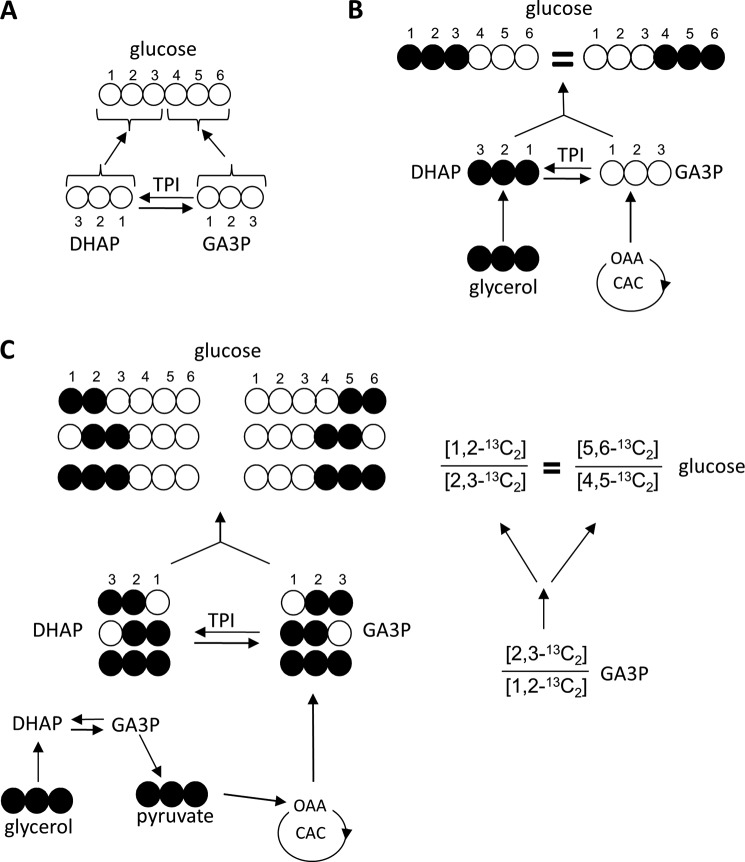FIGURE 1.
13C symmetry between the top and bottom half of glucose from liver supplied with [U-13C3]glycerol. DHAP and GA3P condense during gluconeogenesis. Carbons 1–3 of glucose originate from DHAP, whereas carbons 4–6 originate from GA3P (A). The liver would produce equal amounts of [1,2,3-13C3]glucose and [4,5,6-13C3]glucose from [U-13C3]glycerol if there is complete equilibrium at the level of TPI, no PPP, and no transaldolase activity (B). If a small portion of [U-13C3]glycerol enters the CAC prior to gluconeogenesis, a set of GA3P isotopomers ([2,3-13C2]-, [1,2-13C2]-, [U-13C3]GA3P) are produced, which are common intermediates for both top and bottom half carbons of glucose. Consequently, there would be equal in the ratios of [1,2-13C2]/[2,3-13C3] and [5,6-13C2]/[4,5-13C2] if the PPP is not active (C). Transaldolase activity or disequilibrium at the level of TPI does not influence the relative amount of [1,2-13C2]- and [2,3-13C2]glucose (or the relative amount of [5,6-13C2]- and [4,5-13C2]glucose) because neither pathway disrupts the information encoded by the 13C distribution within the three-carbon unit. OAA, oxaloacetate; open circle, 12C; filled circle, 13C.

